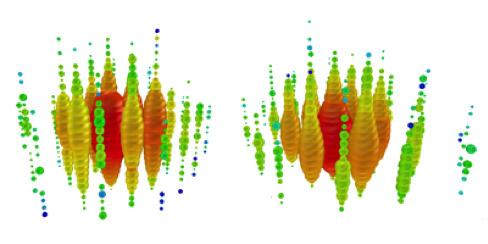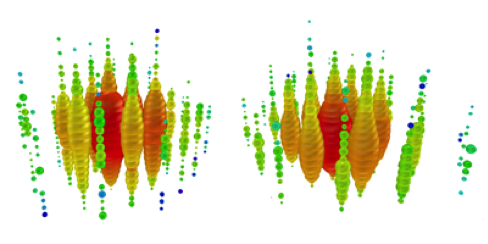Energetic Neutrinos on Ice
Neutrinos can travel huge distances through obstacles (like interstellar gases) that would stop other particles in their tracks. They are hard to catch, but also potentially good signals of what is going on in galaxies and other things far, far away. In Physical Review Letters, the international IceCube collaboration reports observation of the highest energy neutrinos ever recorded. If confirmed by additional observations, the events could be the iceberg’s tip of a cosmic flux of unusually high-energy neutrinos, unknown until now. These messengers could be carrying information about gamma-ray bursts and active galactic nuclei that may have produced them.
IceCube consists of strings of photomultiplier tubes lowered into boreholes at the South Pole and comprises about one cubic kilometer of ice. Its detectors are triggered by Cherenkov photons from energetic particles moving through the -meter-thick polar ice cap. The team recorded two particle showers initiated by neutrinos in which all the collision debris was contained within the detector volume. Adding up the energies of these secondary particles and working backwards, the authors calculated that the energies of the initial neutrinos were above peta-electron-volt ( electron volts), about ten orders of magnitude higher than typical neutrinos from the Sun.
The researchers are cautious about claiming too much for only two neutrino observations, discovered in nearly two years of stored IceCube data, but the probability of such events arising from background effects is only . Really nailing down whether such events arise from astrophysical sources will require more data. – David Voss





